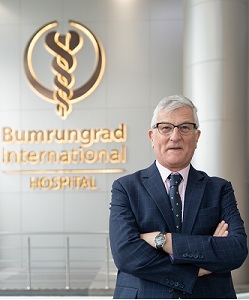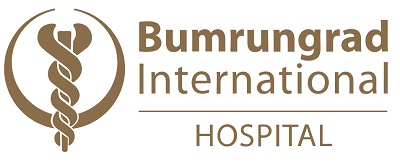When it comes to the digitisation of clinical laboratories, microbiology has always presented a challenge – particularly where integration and going paperless are concerned. It has been a long journey to achieve this at Bumrungrad International Hospital in Thailand, but it has definitely been worth it.
Let me give you some quick background. When Bumrungrad first went live with the InterSystems TrakCare electronic medical record (EMR) system our clinical laboratory took a huge leap forward. By digitising our core laboratory processes – which handle 60-70% of the hospital’s five million annual tests – clinicians were able to place orders directly into TrakCare and receive results within a patient’s EMR, improving turnaround times and ease of use.
Lab reports, delivered in a structured data format rather than a PDF scan, could be analysed in context with the benefit of decision support systems. Patient safety was also protected by eliminating manual transcription errors. Rules-based workflows increased efficiencies and ability to scale, while decreasing risk.
But what about the remaining 30-40% of tests? Could we also digitise them and get similar benefits for 100% of our tests? Even though it had probably never been done before that was the goal we set ourselves, starting with possibly the most difficult area, microbiology.
Why digital microbiology is a challenge
Let me explain why digitising microbiology is so challenging. Microbiology is a laboratory department that deals with the identification of organisms which could be clinically significant or infectious and how to treat them in the most effective way, a vital aid to the clinical process.
Traditionally microbiology is very resource intensive with many notes recorded in a step by step sequence, creating a very linear yet unpredictable workflow. The task that I am doing now is very dependent on the task that I’ve just done, and more importantly, the outcomes of the task I’ve just done. What I do now is going to affect the future tasks, and those are all unknowns until I’ve completed that task.
At Bumrungrad, our approach to overcoming this challenge was extensive analysis of the tasks and outcomes before we started any design processes. We had a very good understanding of each of the individual tasks and the potential outcomes, and then we started to build relationships between those tasks and their outcomes, and the future tasks.
When we had all those relationships defined, we were able to start doing some objective analysis and decided that they fell into analytical groups – which we then defined universal standard protocols for. Because these protocols were discrete units of work, we were able to apply specific annotations of criteria which were dependent upon things like what the sample type was, and each would have a different outcome from the different sample types.
We ended up with a very complex hierarchy which from an integration point of view enables autocompletion, or triggering of some other actions onward. We also used standard HL7 messaging throughout to communicate between the different systems involved.
Our systems environment is very diverse, like many microbiology facilities, because there is no one single provider that suits all microbiology services. Our laboratory business management system is InterSystems TrakCare® Lab Enterprise, and we also use the BD BioTyper and EpiCenter™ combination as our microbial identification system. Then we have the VITEK® system for our antibiotic sensitivity work.
All of these are controlled through HL7 messaging from TrakCare Lab Enterprise. With positive validation of the protocols within our laboratory business management system there is acknowledgement of messages and a full audit trail is also managed.
Creating paperless microbiology workflows
At a high level the workflow is as follows. The sample is plated out and we identify the three most significant colonies, which is a manual task. If the colony is identified we add a protocol which contains one or two organisms, which is done in TrakCare Lab Enterprise. TrakCare Lab Enterprise then sends a message to BD EpiCenter which manages all devices, and then it comes to the point of identification.
A unique material ID is generated for each organism that is going to be identified, the barcode is scanned, and the biotyper identifies location. BD EpiCenter says: Yes, I’ve received a request for organism one, I acknowledge organism one is being put on the analyser in this location, followed by organisms two and three.
Then the analysis is done, it’s validated on the PC associated with BD EpiCenter and the organism is sent back to TrakCare Lab Enterprise. It then knows an antibiotic sensitivity needs to be conducted. It defines according to the various rules what type of antibiotic profile is required, and then it sends a message to the VITEK machine and the results come up on a worklist next to the machine so that the technician knows which type needs to be selected.
When it is positively identified, the analysis is performed, validated into our laboratory business management system, where it can be reviewed for quality control, and put into context with the patient. The report which goes into the electronic patient record (EPR) is created so all the antibiotic sensitivities are structured and digital.
By doing it this way we’ve managed to eliminate paper completely from the department. It’s something that has been difficult to achieve, but we’ve managed to do it, which is a very good thing. And we believe it is something that very few microbiology laboratories anywhere in the world have been able to achieve.
One of the keys to our success has been staff engagement. We included the lab staff and end users during every phase and encouraged them to be granular and report back what they wanted to see in their workflows. The fact that from day one we’ve managed to go 100% paper free is because the staff have been very engaged with the project and they knew exactly what needed to be done. In fact, we’ve had no issues with our core workflow in microbiology going digital.
Benefits to Bumrungrad International Hospital
So, let me summarise what the advantages are to Bumrungrad International Hospital. We’ve introduced a standard communication channel within the department and have no paper, which is a definite advantage when you are talking about pathogen detection and risk management.
We’ve also introduced at every step positive identification, not just of the sample, but of the task that is being performed. Discrete barcodes are generated at each point of the process and we’ve introduced governance of those tasks, so we’ve had positive acknowledgement that this is actually the right task to carry out on this patient on this sample.
Because everything is digital, and the result goes directly into the patient EPR, we’ve increased the safety and confidence around our process. That’s because there is no transcription. It’s all rule based which builds in evidence practice and guidelines into the workflow as well as full auditing capabilities and risk management, identifying issues before they occur.
We’ve also managed to make our workflow considerably leaner. Because everything is rule-based and automatic, there’s no going back and double checking.
Another advantage is all our results are reported in the EPR in a structured format. By allowing our clinicians to view them in a structured way, that enables us to do granular infection control and surveillance reporting– in not quite real time but pretty much real time because we can run reports as and when required.
We can also use protocols which puts us in a good position to apply robotics to microbiology functions. The intelligence has already been built into the protocols, so it’s just about finding the right automated microbiology solution. That is going to come, I’m certain of it.
Last but not least, our digital microbiology solution is also scalable. It’s not dependent on members of staff or increasing physical space. The only thing that is required is extra analysers.
These are the main advantages to our business. I hope this has inspired you to take on digitisation of your own microbiology department. It’s a hard journey and takes a lot of engagement, dedication, and analysis of your workflow and environment. But as we’ve shown, it’s possible to do it, and I would say well worth doing.




















